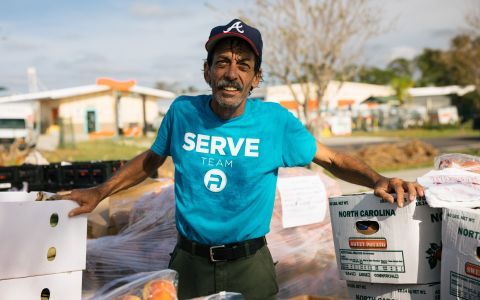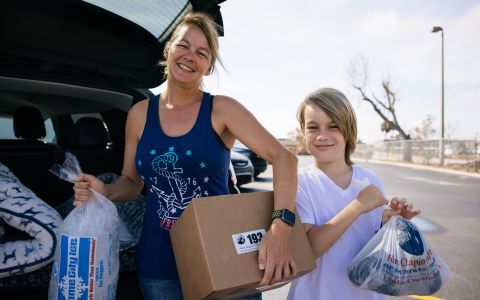Hunger and food insecurity
Food insecurity is when people can't access the food they need to live their fullest lives. There are many causes of food insecurity. But one thing is clear: financial security for everyone is the most effective way to end hunger.

What is food insecurity
Food insecurity is an official term from the USDA. It's when people don't have enough to eat and don't know where their next meal will come from. It's a big problem in the United States, where 47 million people, including 14 million children, experience food insecurity annually. However, many more people, including millions who do not meet the definition of food insecure—turn to the charitable food sector for support. Learn more about how Feeding America measures hunger in America.

Causes of food insecurity
Food insecurity is a systemic issue that can happen to anyone, not a personal failure. According to our Elevating Voices Report, people facing hunger struggle with high living costs, expensive housing, unemployment, and low-wage jobs.
-
 Income-related factors
Income-related factorsPeople with lower incomes or unstable incomes are more likely to experience food insecurity. This includes people working low-wage jobs, facing unemployment or having a disability. People may face income instability because of job loss, unreliable work, financial emergencies or systemic barriers in building wealth.
-
 High cost of living
High cost of livingNeighbors experiencing food insecurity tell us that the high cost of food and other essentials is one of the top reasons why it’s increasingly difficult to afford and access the food they need to thrive. The cost of essentials like food, housing, health care, utilities and child and dependent care can stretch already tight budgets, making it harder to get by.
-
 Community factors
Community factorsCommunity environments play a critical role in food security. Limited or no access to transportation and well-resourced schools, or living in unsafe neighborhoods, can make it harder to access food or move up economically, particularly for low-income families and children.
-
 Health-related factors
Health-related factorsThe cost of managing chronic health conditions can take money away from food and other essentials. Limited access to health care, particularly in low-income and rural areas, can make food insecurity worse. When people are unable to afford nutritious food, it increases the risk of nutrition-related illnesses, creating a cycle that is difficult to break.
-
 Systemic barriers to opportunity
Systemic barriers to opportunityHistorical and ongoing discrimination, along with unfair systems in policies and institutions, have created disparities in food insecurity. For many communities, these challenges are passed down from one generation to the next, keeping families trapped in a cycle of poverty and hunger.
Effects of food insecurity
Food insecurity, or the lack of access to enough nutritious food, can have serious consequences on people's health and well-being.
Physical health
People who experience food insecurity are more likely to experience malnutrition and chronic conditions like heart disease and diabetes.
Mental health
Food insecurity can also hurt people's mental health and result in depression, anxiety, and stress.
Well-being
Not meeting basic needs like food and shelter can lead to social isolation, stigma, and shame.
School and work
Without enough food, people who experience food insecurity may have difficulty concentrating, have low energy, or miss school and work due to illness.
Discover how the Feeding America network addresses overall health and well-being, not just hunger.
A thriving economy solves hunger
Poverty, unemployment and low wages lead to food insecurity. It's why Feeding America helps people experiencing food insecurity get the food and resources they need by increasing access to food in their communities. We also work locally and nationally to expand economic opportunities. Get the facts on hunger and poverty.

